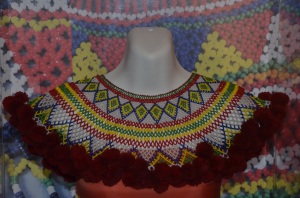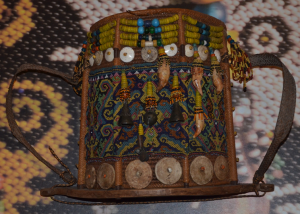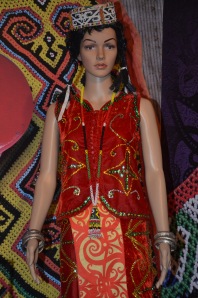by Maganjeet Kaur
This is an on-going exhibition at Muzium Negara until 31 Mar 2014. The exhibition showcases the usage of beads in Malaysia both for personal adornment and for the decoration of belongings such as baby carriers.
Beads have been used as jewellery in all cultures and are among the oldest artefacts found at archaeological digs around the world. Early jewellery used to be made of bones, teeth, shells and pebbles and the earliest jewellery found to-date are made of shells from the marine snail Nassarius. Dated to 85,000-100,000 years ago, beads made of Nassarius have been found in caves in Israel, Morocco and Algeria.

The Malay word for beads is manik which is derived from the Sanskrit word manikya meaning precious stones. The earliest beads made of glass and precious stones found in South-east Asia came from India, most likely the South Indian bead making facility at Arikamedu and beads became a major trade commodity in South-east Asia. Regional manufacturing centres later developed at Kwan Luk Pat in Thailand, Mantai in Sri Lanka and Oc-eo in Vietnam. Beads were produced locally from the 7th century and bead manufacturing centres developed at Kuala Selinsing (Perak), Sungai Mas (Kedah) and Santubong (Sarawak). In the 1800s, Venetian and Bohemian glass beads were introduced by European traders. The diversity of patterns and their mesmerizing colours made these favourites for personal adornment.
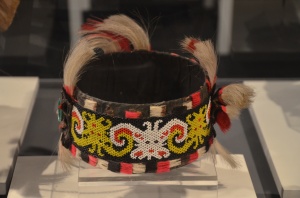
Starting out as jewellery, beads were later adopted as symbols of wealth depicting the social status of the person wearing them. Beads were also treated as currency, for example for the Lun Bawang community, 50 beads of bao tulong buror (straw beads) equals the value of a buffalo. Some beads were believed to have special powers and were used as an intermediary when performing ceremonial rituals.
Heirloom beads were considered special and not traded. Reattaching heirloom beads required a ritual to summon the spirit of the bead and required special skills to do so.
The baby carrier in the picture above is decorated with beads, shells and the canine teeth of a tiger. The shells and teeth produced a clinking sound which is believed to ward off evil spirits. The number of canine teeth hung gave the indication of the sex of the baby; even number for a girl and odd for a boy. This baby carrier would have been used to carry a baby girl as there are 4 canine teeth hung.
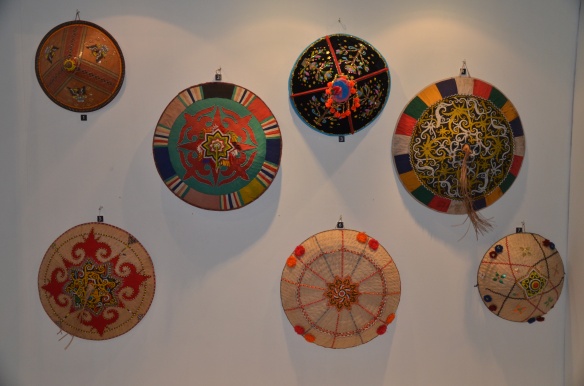

Baby carriers in Sarawak are made of bark, rattan or wood and decorated with beads.

